
Updated: April 16, 2025
While winter is just beginning, spring will be here soon, and we will be eager to fill our gardens and patios with colorful blooms. Perennials have the advantage of being low maintenance and coming back each year to become a long-term addition to your landscape. If that is not enough, some of them show off their blooms in spring, making them a fine addition to your collection of spring-blooming plants.
Here are a few spring-blooming perennials to consider for your garden.
Alexander’s Great Brunnera
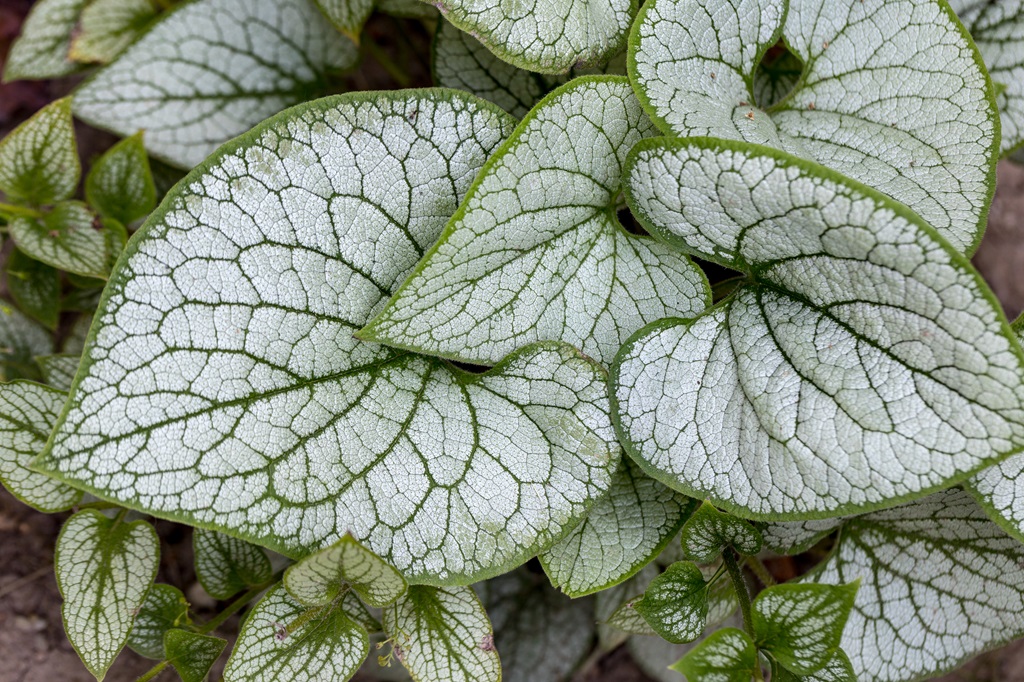
This underused perennial has much to offer in the garden with its attractive silver foliage from spring to fall. The spring blooms are the cherry on top, as numerous light blue flowers rise above the plant in spring, adding excellent contrast with the foliage. Brunnera thrives in part to full shade and is a great companion plant for shade-loving perennials like Ferns, Hostas, and Bleeding Hearts.
Common Bleeding Heart
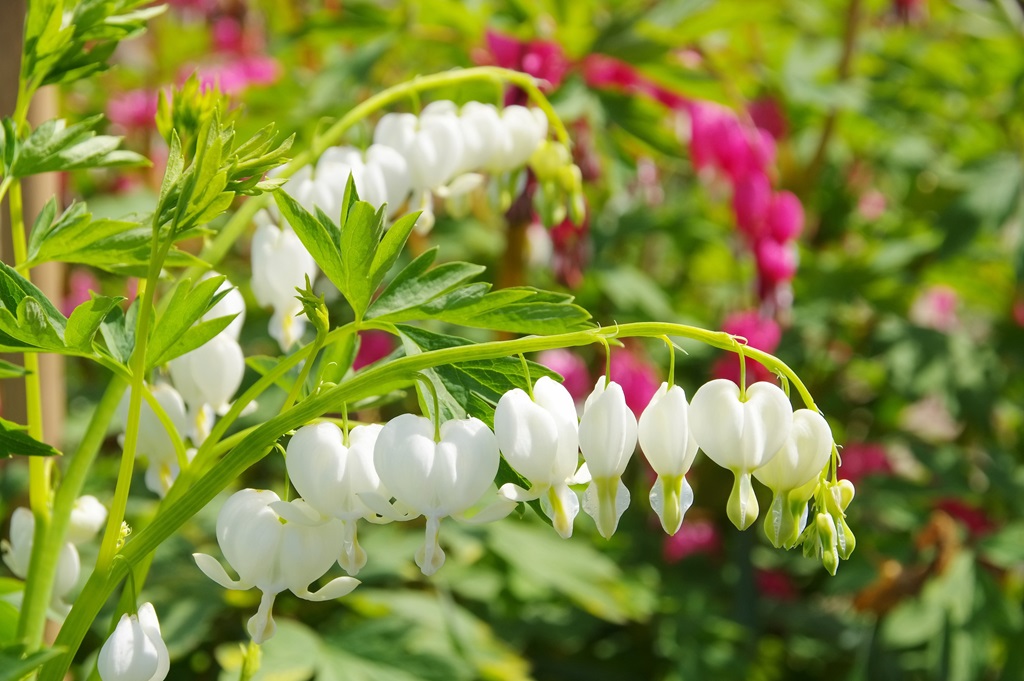
This classic perennial is known for its extreme durability and cheerful heart-shaped flowers. Pink is the most common bloom color, but you can also find white and red varieties, like Giant White and Giant Valentine®. In most areas, these will go dormant in summer, so consider planting where other plants will fill the gap. These will thrive in the shade and grow well with a variety of plants, like Hosta, Solomon’s Seal, Ferns, and Brunnera.
Creeping Phlox
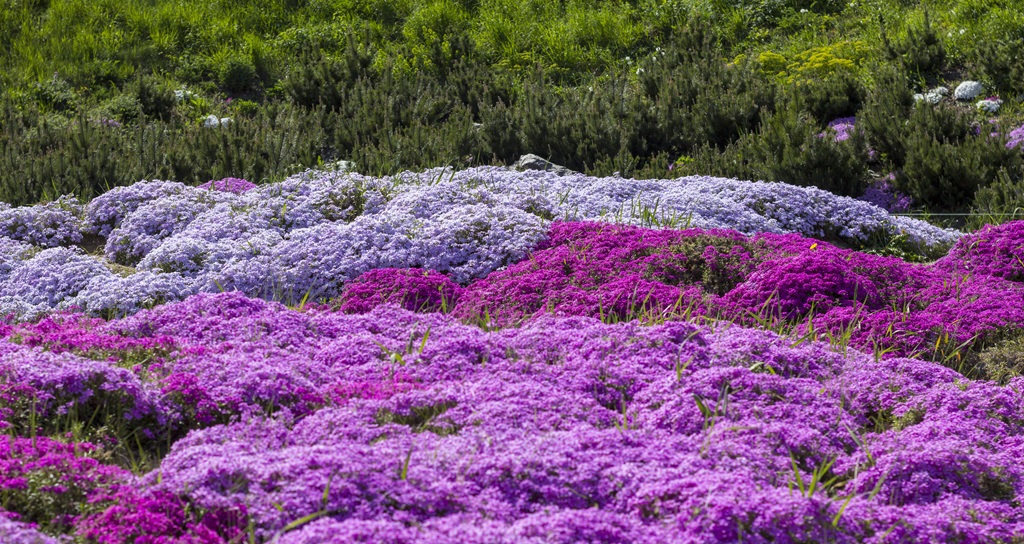
If you’re looking for a pop of color that covers the ground like a carpet, look no further than Creeping Phlox. This short, growing perennial comes in many colors, including pink, purple, and white. In spring, the leaves practically disappear under the masses of colorful blooms. Phlox is ideally suited to rock gardens, retaining walls, and anywhere you’d like a spreading groundcover. A few varieties we recommend are Eye Shadow, Amazing Grace, and Wine Red.
Dwarf Bleeding Heart
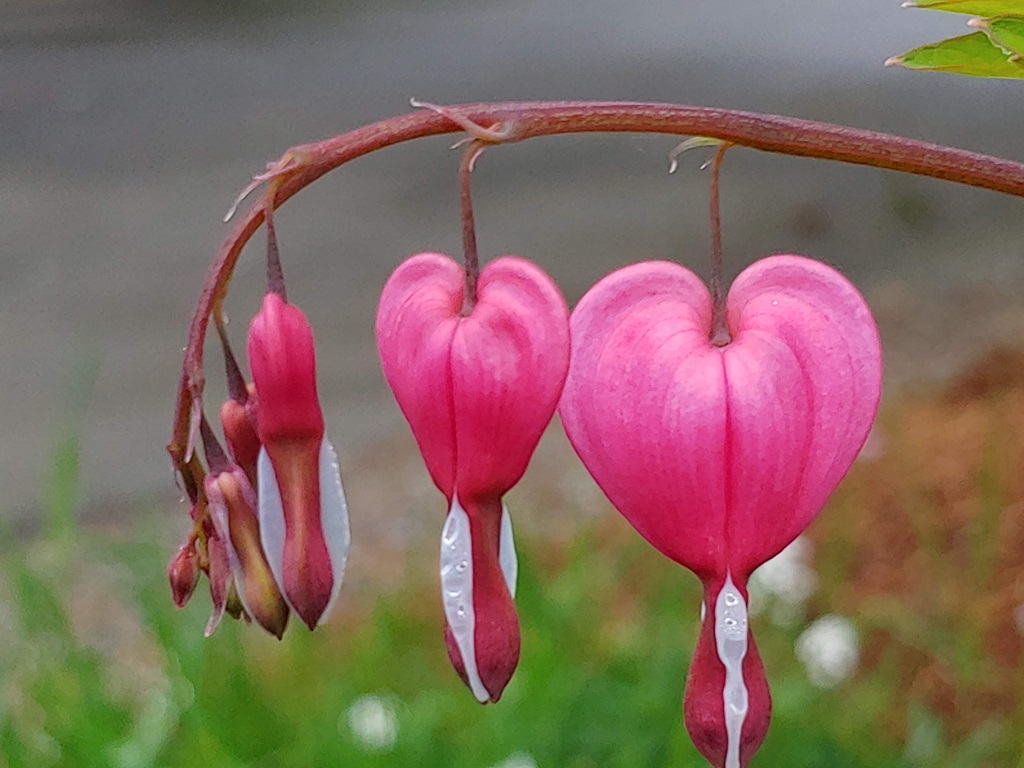
This dwarf form of bleeding is like the common species but with a few differences. Fringed Bleeding Hearts typically bloom longer and don’t go dormant in summer. They’ll bloom through summer if you give them consistent moisture. Dwarf Bleeding Hearts remain shorter, so you can use them as a ground cover for shady areas, especially along walkways or patios. Their blue-green foliage resembles ferns and has a fine texture that looks great alongside the blooms. A few cultivars to grow are King of Hearts and Pink Diamonds.
Lenton Rose (Hellebore)

Here’s an elegant perennial that often blooms earlier than anything else in the landscape, and if that’s not enough, the semi-evergreen to evergreen foliage shines in the winter garden before the numerous bell-shaped blooms emerge in late winter and early spring. Hellebores are long-lived perennials that require little to no care once established and will provide you with multi-season interest each year. In the garden, use them to complement other spring bloomers, like Ephemerals.
Pig Squeak (Bergenia)
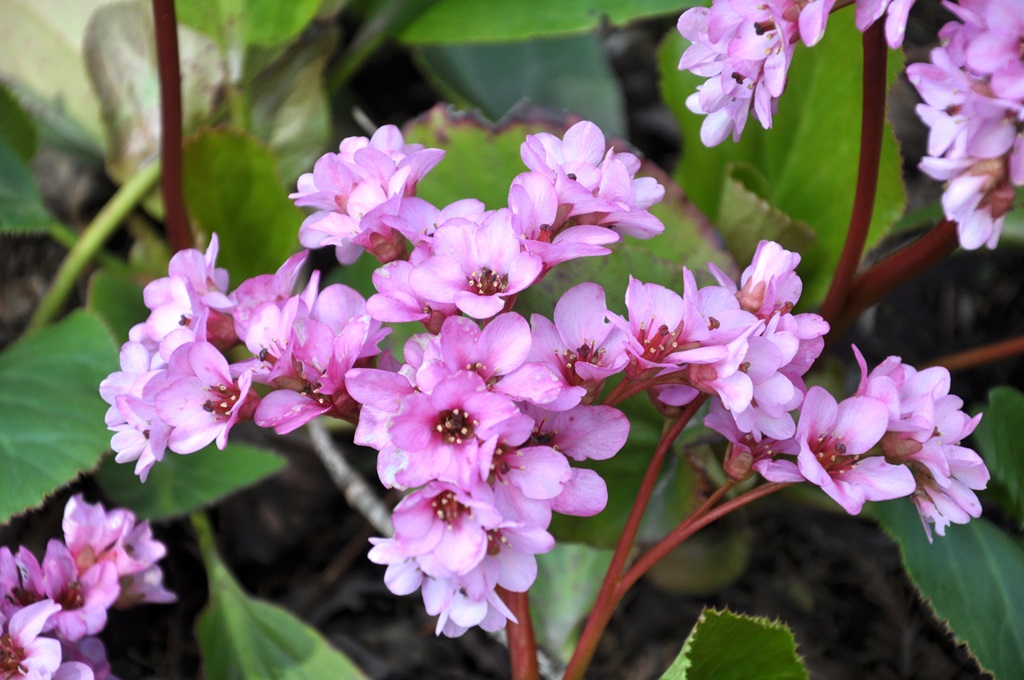
The name may sound strange, but the spring display is impressive. In mid-spring, clusters of bright pink flowers emerge above the large glossy green foliage to provide a memorable show. As the blooms fade, the semi-evergreen foliage looks good in summer and fall before turning red in winter. Areas with partial shade are best to keep the leaves from becoming too dry, especially in winter.
Spring Ephemerals
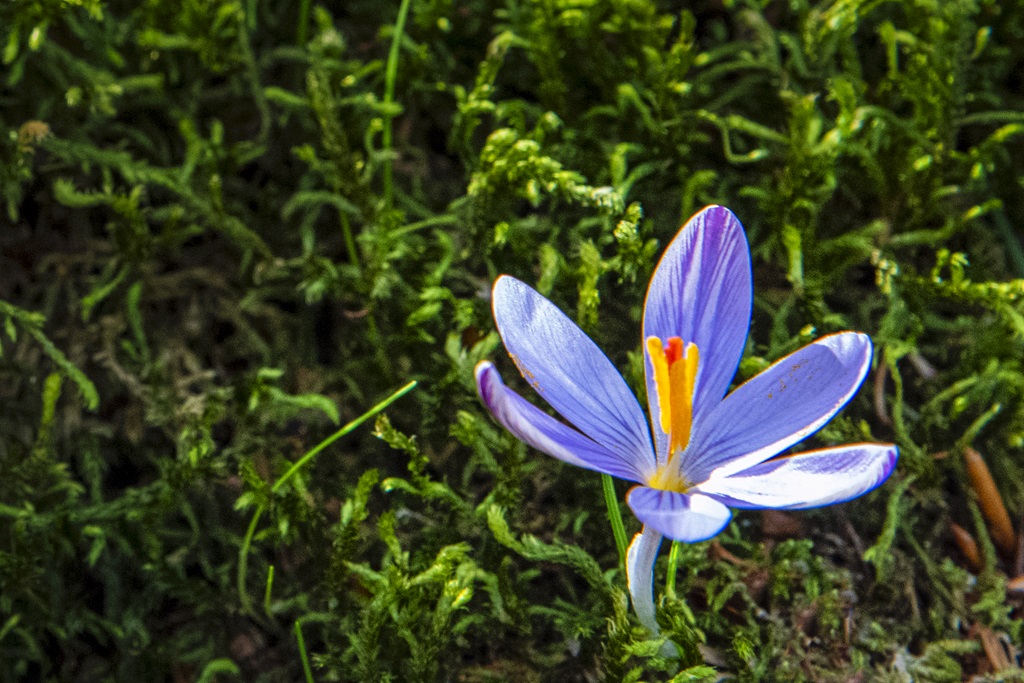
This unique group of plants is a welcome sight in spring with their showy blooms that add color to the early spring landscape. These plants have an amazing life cycle, with leaves that emerge in spring and quickly give way to colorful blooms before going dormant a few weeks later. We don’t see them for most of the year, but when they make an appearance, it’s hard to miss.
Ephemerals grow best with full sun in spring and part shade in summer, making them great plants to grow under deciduous trees. These conditions ensure they’re receiving enough light in spring to give energy to the plant and help it bloom. Because they’re small, ephemerals look their best when planted in groups. They never grow large, so you can plant them near other perennials to fill small gaps or between other perennials that will fill the space after the ephemerals go dormant. Many of these plants are native to North America, allowing them to provide nectar for early pollinators. Here are a few ephemerals for your garden:
Bloodroot
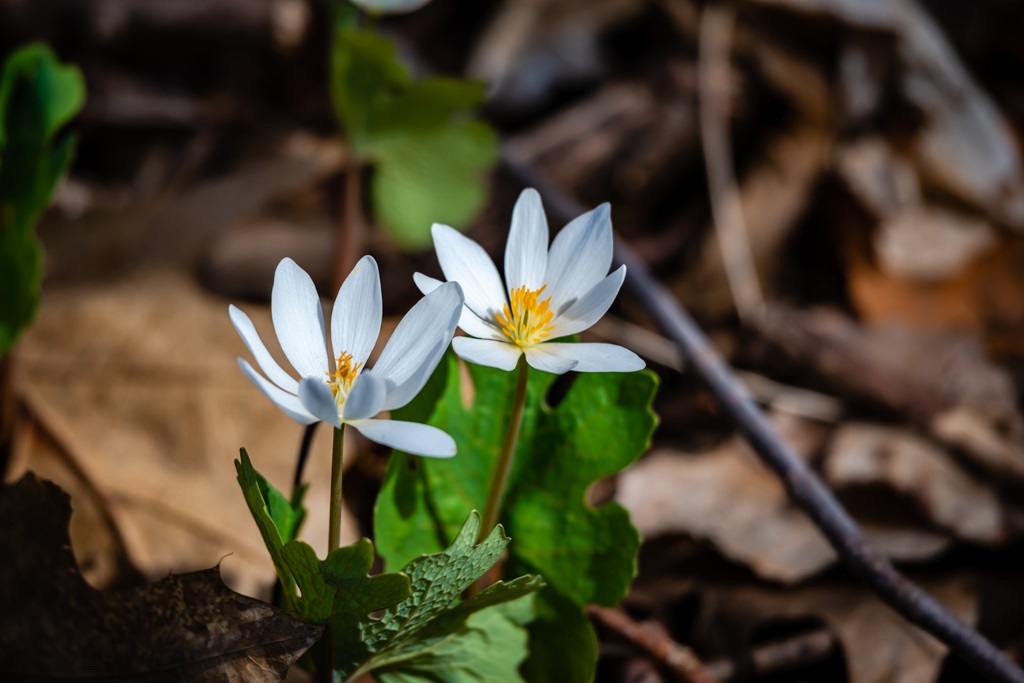
The unique name for this plant comes from the red-orange-colored rhizomes that are used to make colored dye. And for many gardeners, the main appeal of Bloodroot is the white daisy-shaped flowers and unusual-shaped foliage. As the plants emerge, the deeply lobed leaves remain tightly wrapped around the short stem, then begin to unravel as the flowers bloom.
Dutchman’s Breeches
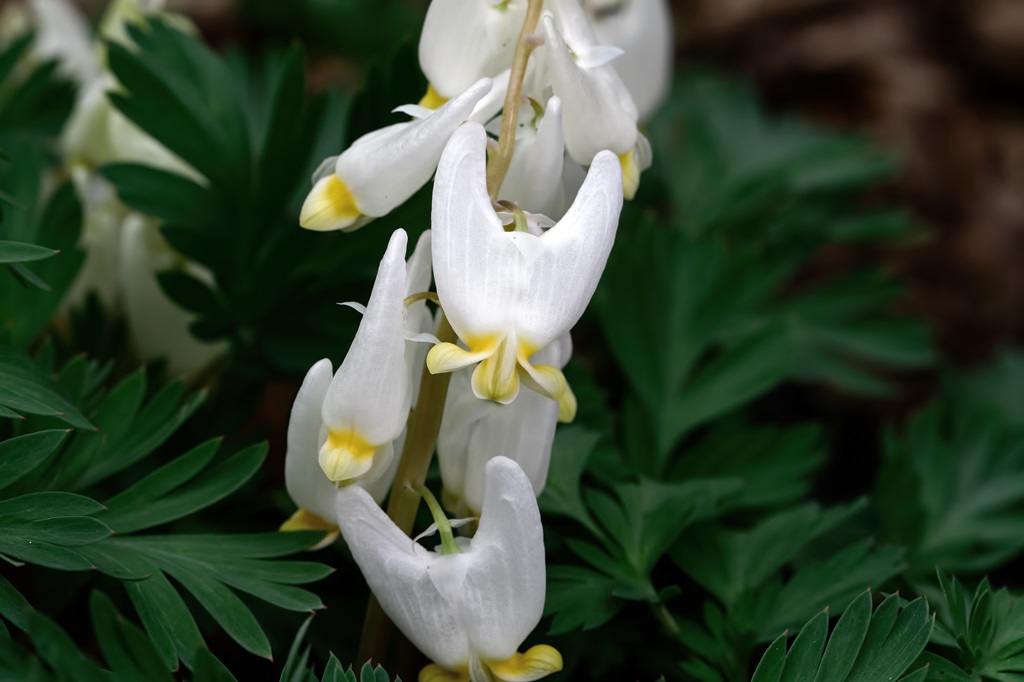
If you enjoy common Bleeding Hearts, consider growing this smaller species of Bleeding Heart, named for the white blooms resembling upside-down breeches. These flowers rise above the finely textured foliage to provide beautiful contrast. In my travels to botanic gardens, I have seen these planted in boulders and other small crevices, making them a versatile plant for landscapes. And remember, these will go dormant in summer, so it is best to plant them in a visible part of your yard.
Large White Trillium
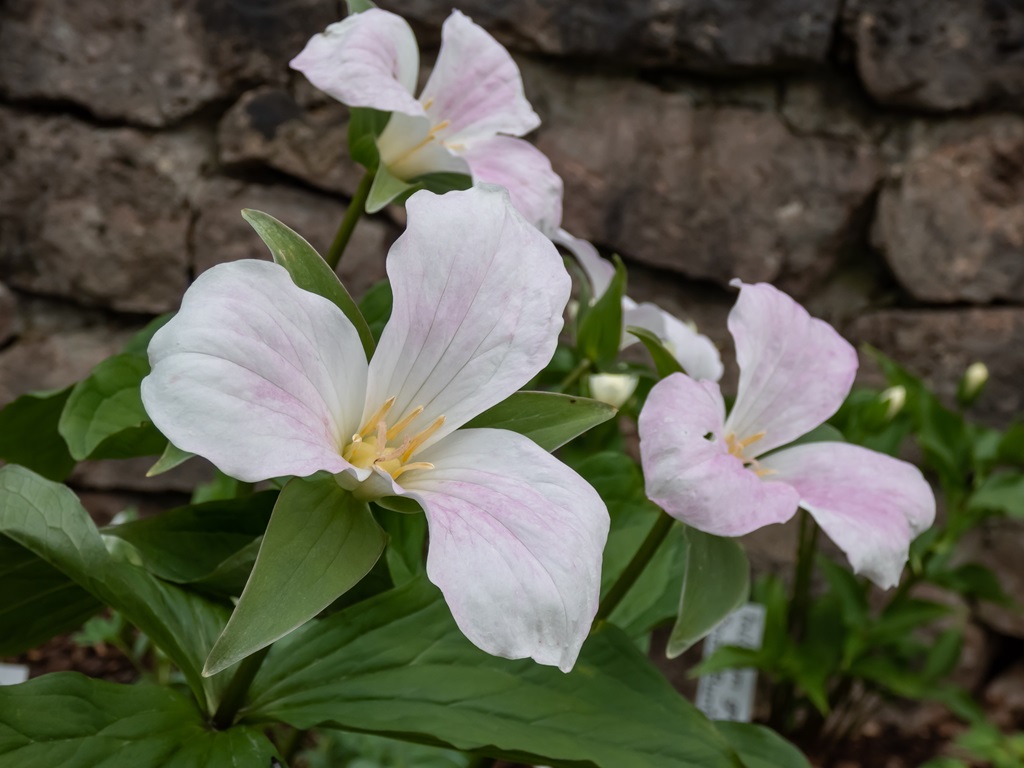
One of my favorite childhood memories was traveling around Wisconsin in spring and passing woods full of blooming Trillium, as their pure white blooms are truly stunning. You can easily find these plants in the wild, but they’re also excellent plants for the garden, where they will slowly expand to form thick clumps of foliage and blooms. Trilliums grow best in areas with partial sun and moist soil.
Virginia Bluebells
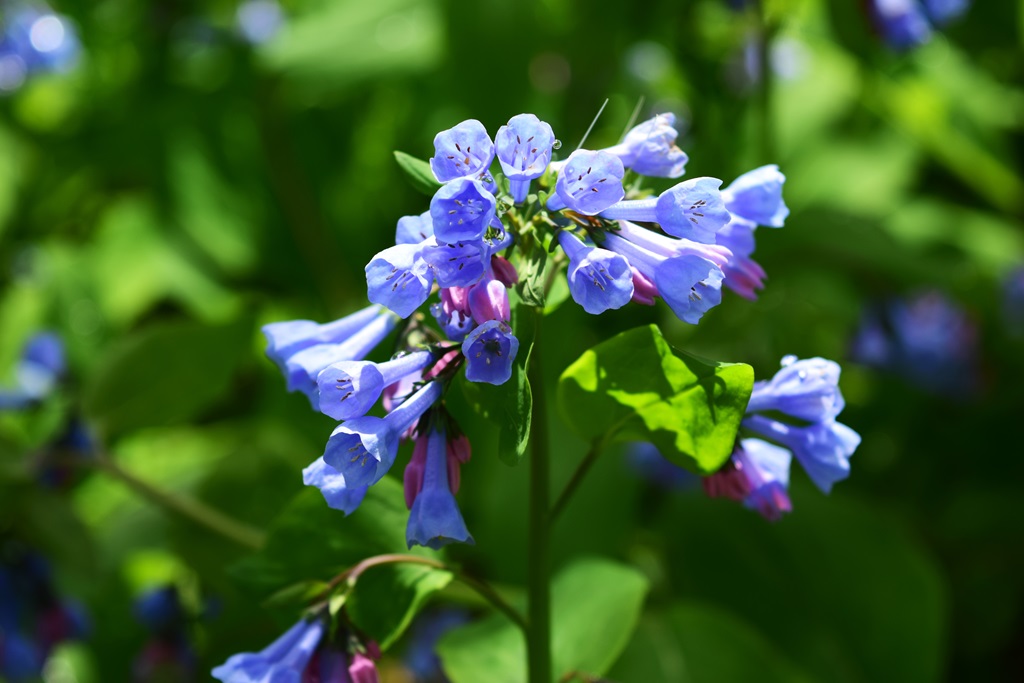
This woodland native is known for its pink flower buds that open to light blue flowers. We do not often find blue flowers among plants, but Bluebells and Brunnera provide that hard-to-find color. Like other Ephemerals, Bluebells will spread over time but disappear in summer, making them ideal for planting between other perennials in part sun areas of the garden.

As winter continues, let’s dream of new ideas to add even more color to the early-season landscape!
Other Recommended Reading

- Bee Kind Gardening – A Guide To Plant & Pollinator Balance
- Understanding Plant Diseases
- 5 Must-Have Flowering Shrubs For Spring
- Spring Gardening: March Garden Checklist Zones 3-6
- Perennial Planting: How To Overcome Difficult Planting Sites

At Jung Seed Co, we strive to be your go-to guide for all your gardening needs. Our YouTube channel The Garden Doctor by Dick Zondag is where he provides gardening tips for all levels of gardeners. When you need reliable gardening advice, turn to the trusted experts at Jung.
View our new catalog online or browse our website for your gardening favorites. To receive info on new products, exclusive deals, and specials, be sure to sign up for our weekly email. Join our Facebook page, to discuss all things gardening!
About the Author: Matthew Olson is a professional horticulturist and garden writer. He has a bachelor’s degree in horticulture from UW-River Falls and is a certified professional with the Minnesota Nursery and Landscape Association. His enthusiasm for plants and the outdoors brought him to the green industry. He regularly writes articles about gardening for both gardeners and industry professionals. He can be reached at matt@mattolsonhorticulture.com.